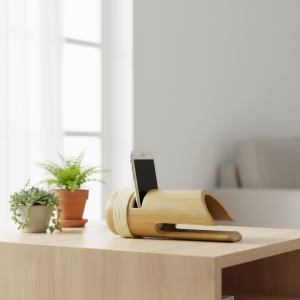The Geological Marvel of Purple Clay
Nestled in the region of Yixing, China, lies a geological treasure that has captivated tea enthusiasts for centuries: purple clay, known locally as zisha. This unique sedimentary rock formation, found only in this specific area, possesses properties unmatched by any other ceramic material. Unlike conventional clays, zisha contains high concentrations of iron oxide, quartz, and mica, along with trace minerals that give it both its distinctive coloration and remarkable functional characteristics. The clay’s natural porosity allows it to absorb the essence of tea over time, while its fine grain structure enables artisans to create pieces of astonishing thinness and precision. What makes purple clay truly extraordinary isn’t just its composition, but how it transforms through firing—developing a patina that tells the story of every brew it has ever held.
The Three Primary Varieties of Zisha Clay
Not all purple clay is created equal. Connoisseurs recognize three main classifications, each with distinct properties and appearances. Zini, or pure purple clay, ranges from light lavender to deep eggplant hues and is prized for its balanced porosity and excellent heat retention. Hongni, characterized by its reddish-brown coloration resulting from higher iron content, offers slightly denser structure and is particularly favored for oolong and black teas. The rarest variety, Bini or green clay, contains more kaolin and presents in subtle olive-green tones, known for its delicate texture and superior ability to enhance tea fragrance. Within these categories exist numerous sub-varieties like Dicaoqing, Bengpo, and Zhuni—each mined from specific locations around Yixing’s Huanglong Mountain, with subtle differences that significantly impact the tea brewing experience.
According to a recent study published in the Journal of Ceramic Heritage (2023), authentic Yixing purple clay demonstrates measurable differences in thermal conductivity compared to imitation materials. Researchers found that genuine zisha clay teapots maintain heat 23% longer than stoneware alternatives while allowing optimal oxygen exchange through micro-pores only visible under electron microscopy. This combination of heat retention and slight breathability creates an ideal environment for tea extraction, allowing flavors to develop fully without becoming bitter—a characteristic that synthetic materials cannot replicate despite technological advances.
The journey from raw clay to finished teapot is a months-long process that separates true craftsmanship from mass production. After mining, the clay undergoes years of natural weathering where it’s exposed to sun, rain, and wind—a crucial step that breaks down its structure and removes impurities. Artisans then manually process the clay through pounding, sieving, and kneading to achieve the perfect consistency. The throwing process on wooden wheels requires exceptional skill, as zisha clay behaves differently than conventional pottery clays. Firing occurs at relatively low temperatures (around 1100-1200°C) in traditional dragon kilns, where the reduction atmosphere develops the clay’s natural colors without glazes. This entire process preserves the clay’s micro-porous structure, which is responsible for its legendary tea-enhancing properties.
When selecting a purple clay teapot, several visual and tactile cues indicate quality. Genuine zisha should feel slightly sandy yet smooth, with a matte surface that develops a soft luster over time. Tap the lid gently against the body—it should produce a clear, metallic ring rather than a dull thud. Examine the craftsmanship: seams should be nearly invisible, lids should fit perfectly without wobbling, and spouts should align precisely with handles. The weight should feel substantial yet balanced. Beware of pieces that feel overly heavy (indicating low-quality clay mixed with additives) or suspiciously light (suggesting thin walls achieved through slip casting rather than hand-building). True Yixing teapots always bear the maker’s seal, usually on the bottom, which can help verify authenticity.
Proper care transforms a good purple clay teapot into a cherished heirloom. Never wash with soap—residual chemicals will destroy the clay’s ability to season. Instead, rinse thoroughly with hot water and air dry completely. Dedicate each teapot to one type of tea to prevent flavor crossover. The most beautiful patinas develop naturally through regular use as tea oils gradually accumulate in the pores. If you notice mineral deposits, gently scrub with a soft bamboo brush. Store with the lid off to prevent mustiness. With proper maintenance, a quality zisha teapot will not only improve your tea experience but become more valuable with each passing year—both functionally and aesthetically.
The world of purple clay teapots presents both wonders and pitfalls for newcomers. While authentic Yixing pieces command premium prices, their value lies in generations of tea culture refinement. Modern reproductions from other regions often mimic the appearance but lack the functional properties. Remember that true zisha isn’t just purple—it comes in various natural hues. The best approach is to purchase from reputable specialists who provide certification of origin. Whether you choose a modern design or classical shape, the right purple clay teapot becomes more than a utensil; it becomes a companion in your tea journey, evolving with every infusion and connecting you to a tradition that spans centuries.
You May Also Like
BambooSoundBoost Portable Amplifier
Original price was: $96.00.$66.00Current price is: $66.00. Add to cartAncient Craftsmanship & ICH Herbal Beads Bracelet with Yellow Citrine & Silver Filigree Cloud-Patterned Luck-Boosting Beads
Original price was: $128.00.$89.00Current price is: $89.00. Add to cartThe Palace Museum Paper-Cut Light Art Fridge Magnets: Chinese Cultural Style Creative Gift Series
Price range: $27.00 through $36.00 Select options This product has multiple variants. The options may be chosen on the product pageHandwoven Zhuang Brocade Tote Bag – Large-Capacity Boho Shoulder Bag
Original price was: $178.00.$154.00Current price is: $154.00. Add to cart








